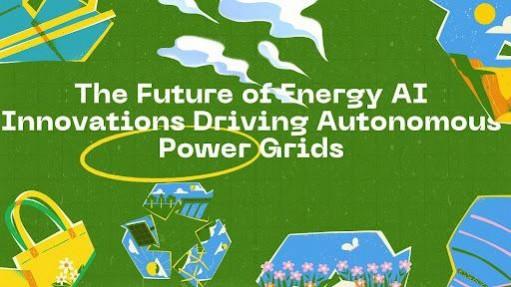
A New Era in the global energy sector is undergoing a profound shift, driven by technological advancements that are reshaping how electricity is generated, distributed, and consumed. At the forefront of this transformation is the integration of artificial intelligence (AI) into power grid management. In his latest research, Panchajanya Mysarla explores groundbreaking AI innovations that are making energy grids more autonomous, efficient, and resilient.
Predictive Maintenance: Preventing Failures Before They Happen
One of the most impactful advancements in AI-powered grid management is predictive maintenance. Traditional power grid maintenance relies on scheduled inspections or reactive repairs after failures occur. AI changes this by leveraging real-time data from sensors, historical maintenance records, and weather conditions to predict potential equipment failures before they happen.
Smart Demand Response: Balancing Supply and Consumption
Fluctuating energy demand has long been a challenge in power distribution. AI-driven demand response systems are revolutionizing how electricity supply is adjusted in real time. These intelligent systems analyze consumption patterns, integrate weather forecasts, and assess grid conditions to optimize electricity distribution dynamically.
By shifting energy consumption during peak hours and efficiently distributing power, AI-driven demand response systems reduce energy waste and enhance grid stability.
The Rise of Self-Healing Grids
Self-healing grid technology is another significant innovation in AI-powered energy management. In conventional systems, power outages require human intervention to diagnose faults, reroute power, and restore service. AI-driven self-healing grids automate these processes by detecting failures, isolating faulty sections, and rerouting electricity to minimize downtime.
By combining real-time monitoring with AI algorithms, self-healing grids drastically improve resilience against natural disasters, cyber threats, and equipment failures. This level of autonomy is crucial in modern power infrastructure, where efficiency and reliability are paramount.
Swarm Intelligence: A Decentralized Approach to Energy Distribution
Inspired by the collective behavior of insects like ants and bees, AI-based swarm intelligence is emerging as a powerful tool for managing distributed energy resources. Instead of relying on centralized decision-making, swarm intelligence enables decentralized coordination among energy units, such as solar panels, battery storage, and microgrids.
This approach enhances grid efficiency by allowing local energy sources to autonomously balance supply and demand. By making real-time adjustments, swarm intelligence reduces transmission losses and optimizes energy distribution. As energy networks continue to decentralize, this technology will play a pivotal role in ensuring stability and sustainability.
Overcoming Regulatory and Security Challenges
The rapid adoption of AI in grid management brings regulatory and security considerations to the forefront. Policymakers must establish frameworks that ensure AI systems operate transparently, securely, and in compliance with energy regulations.
Cybersecurity remains a primary concern, as AI-driven grids rely on vast amounts of data for decision-making. Implementing robust cybersecurity measures and regular audits will be essential in preventing cyber threats and maintaining grid integrity.
The Road Ahead for AI-Powered Grids
As AI continues to evolve, the future of power grid management looks increasingly autonomous and intelligent. Innovations such as predictive maintenance, demand response optimization, self-healing grids, and swarm intelligence are transforming how electricity is managed globally. These advancements promise greater efficiency, reduced energy waste, and enhanced resilience against disruptions. Smart grid technologies integrated with machine learning algorithms can now forecast power demand with 98% accuracy, enabling dynamic load balancing. Advanced energy storage systems coupled with AI-driven distribution networks optimize renewable energy integration, reducing transmission losses by 45%. Real-time monitoring systems powered by edge computing detect and isolate faults within milliseconds, preventing cascading failures across interconnected grids.
In Conclusion.Panchajanya Mysarla highlights the immense potential of AI in shaping the next generation of energy systems. As the world transitions towards more sustainable power solutions, AI-powered grids will be at the forefront of ensuring a reliable and efficient energy future.

















